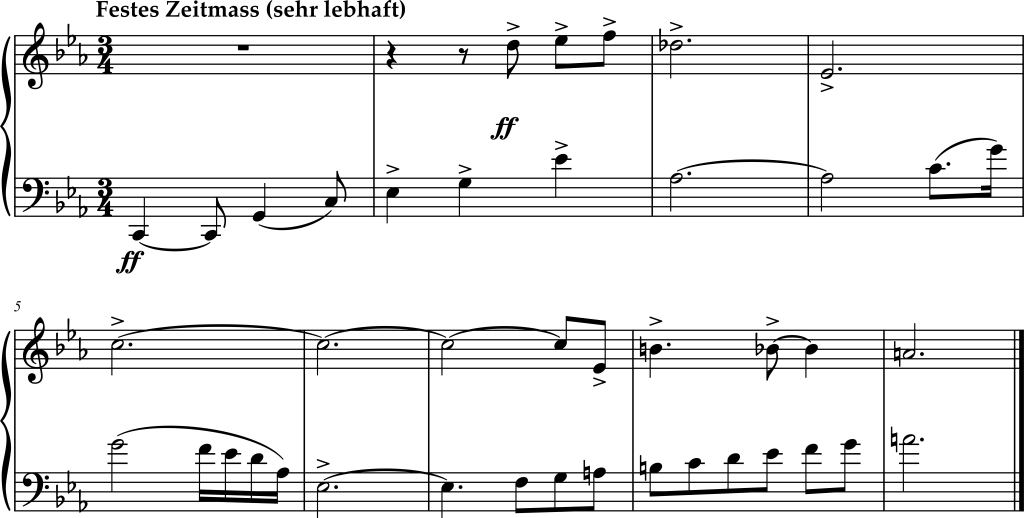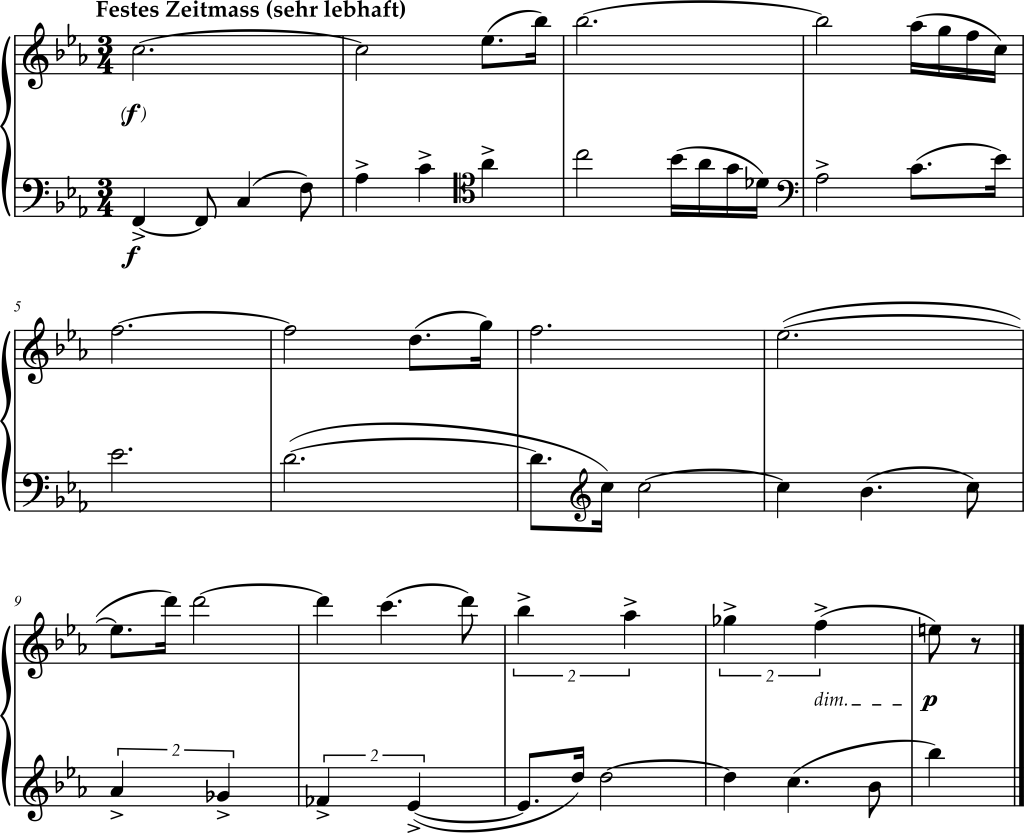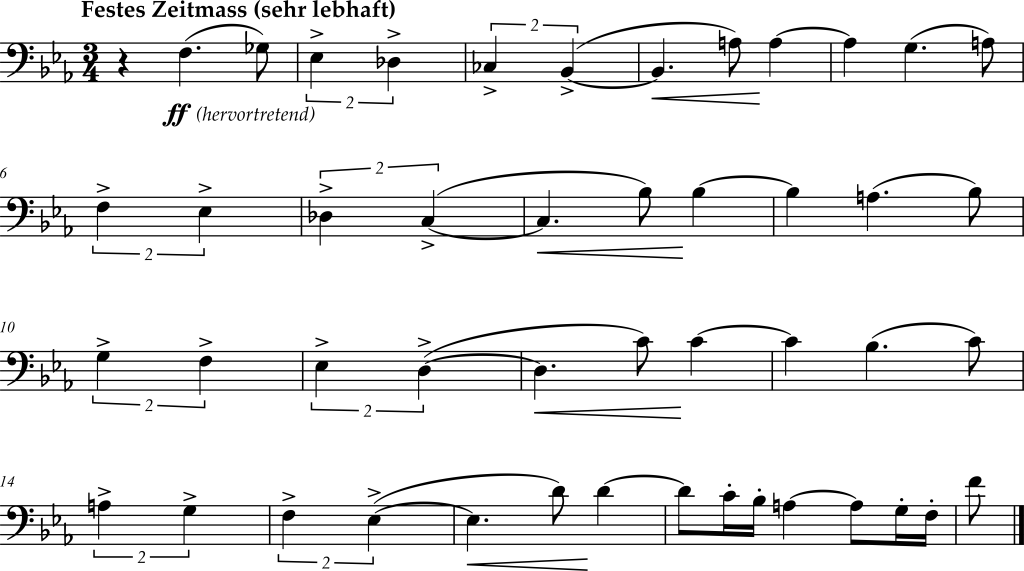B. Large-Value Duplets and Three-Against-Two
Two Guided Examples
Performing large-value duplets has a similar two-step process as performing large-value triplets. First, one must establish the appropriate subdivision, in this case a duple division of the beat. Then, one must identify the duplet that evenly divides the three-beat span.
In the examples below, the meter is simple triple (3/4), so the duple division of the beat is already present––no separate division needs to be constructed and mentally maintained. (The same would not be the case if the time signature was, say, 9/8). The eighth note that evenly divides the 3/4 measure is the one in the middle of the second beat. Exercises 5B-1 and 5B-2 demonstrate. In Exercise 5B-1, the syncopated pattern in the penultimate measure of the top staff is a written-out large-value duplet, with the accented Bb falling in the middle of beat two. The pattern could have been notated with duplet notation as in the last system of Exercise 5B-2. The challenge in Exercise 5B-2 is to imagine the notation of Exercise 5B-1. In both exercises, the syncopated pattern in the first measure of the bottom-staff melody primes the later large-value duplets.
A note about notation: large-value duplets in 3/4 are frequently notated with either quarter notes or half notes. Both are found in the literature. Our engraving software defaults to quarter notes, so that is what will be encountered in the examples below. The original score uses half notes.
Exercise 5B-1: Richard Strauss, Ein Heldenleben

Exercise 5B-2: Richard Strauss, Ein Heldenleben

Additional Examples
Below are some additional examples for practicing large-value duplets, also drawn from the “battle scene” from Strauss’s Ein Heldenleben.
Exercise 5B-3: Richard Strauss, Ein Heldenleben

Exercise 5B-4: Richard Strauss, Ein Heldenleben


